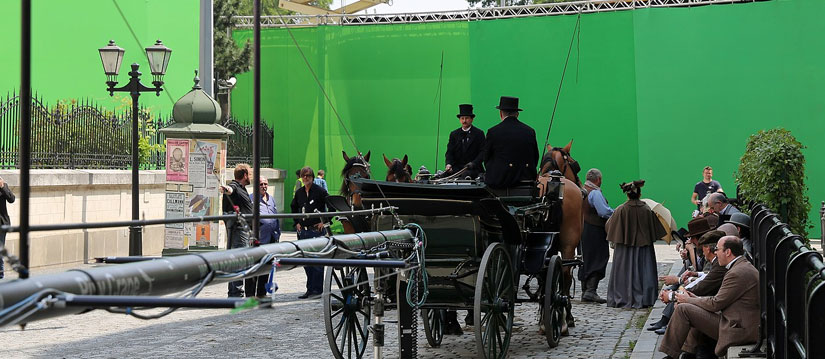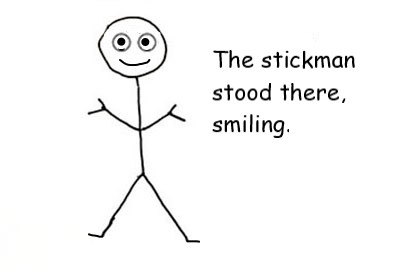
Most new writers I’ve worked with share the crucial misconception that the way to write a novel is to create a movie in their head and then write out that movie.
This causes all manner of problems, and over the next few months, I’m going to talk about a few of them. The primary origin of these problems is that movies can use only sight and sound. (Smell-o-Vision doesn’t count.) A novel can use all the senses and in this aspect is far superior to film. Transcribing a mental movie automatically robs a novel of its greatest power.
Indeed, transcribing a mental movie only stresses what movies can do that novels can’t. Novels don’t have musical scores that subtly manipulate the viewer. Novels don’t have beautiful actors telling tales with their eyes and gestures. Novels don’t have explosions that dazzle and deafen.
Get a free sample proofread and edit for your English document.
Two professional proofreaders will proofread and edit your English document.
In short, for this post, novels do not have visual effects. Attempts to translate special effects onto the page can lead to highly awkward writing indeed.
I have officially lost track of the number of times I’ve edited a scene inspired by Neo’s bullet dodging in The Matrix. And, hey, I get it. It’s a cool scene. But if you just transcribe what happens, you end up with something like:
Moving so fast he blurred, John dodged each shot. Bending backward and forward, he evaded the swirling projectiles.
Yawn.
It’s the same with car chases.
The cars sped by with a whoom! One car almost crashed but managed not to. Two other cars crashed into a sidewall and made a horrible noise. Finally, John outraced his pursuers.
Yeah, not thrilling.
Slo-mo, distorted sounds, lens flares, rack focus, CGI, and other such techniques are made to produce a super-heightened visual/auditory reality for a story told in two hours on a huge screen with a few million dollars’ worth of music playing in the background and $20 buckets of popcorn in every lap. Trying to recreate that visual/auditory impact with words on a page is beyond futile. The best you will do is remind the reader of movies they’ve seen.

A good novel does not imitate a film. A good novel transports the reader to an experience beyond film by imitating life. The tools of a great film (or video game) experience are quite different from the tools of a great reading experience.
Because it’s a little obvious that “The Death Star exploded with a mighty bang” is quite inferior to watching the climax of Star Wars, let’s go in depth with a subtler comparison by looking at the opening scene in the movie (Steven Spielberg) and book(Peter Benchley) of Jaws,where a young naked woman gets eaten by a great white shark. (You can view it here, but you don’t need to, and it’s a little brutal to watch.)
Both the film and novel do an excellent job with this opening scene, and neither is better than the other. The point is that they use different techniques.
Jaws the book came first, and it shows. (Even professional novelizations of movies are almost always mediocre, if not hackneyed.) Look at a paragraph from the opening chapter:
She backed up a few steps, then ran at the water. At first her strides were long and graceful, but then a small wave crashed into her knees. She faltered, regained her footing, and flung herself over the next waist-high wave. The water was only up to her hips, so she stood, pushed the hair out of her eyes, and continued walking until the water covered her shoulders. There she began to swim—with the jerky, head-above-water stroke of the untutored.
In the movie, this scene is quite different. For one thing, we have a camera coyly playing with the actress’s nudity, almost showing too much skin but never quite. Moreover, to enhance the woman’s beauty, she’s an excellent swimmer, even making a cute little leg move in the water.
But what the movie gains in spectacle (an actual naked woman to ogle), it loses in foreboding. The novel’s cleverness in calling her “untutored” is to stress subtly that she is vulnerable. As readers, even before we know the shark is out there, we’re aware something is dangerous. We just don’t know what. Additionally, by first making her graceful and then “jerky” as the waves hit her, she seems real and relatable to most of us who aren’t champion swimmers in the ocean. She is also out of her element and thus, again, vulnerable.
What the novel gives us with “untutored” and “jerky,” the movie gives us with ominous music and a shot of her body from below. However, with that shot, the audience knows instantly that the danger comes from something swimming below her, and some of the mystery in the novel’s opening is lost.
Next, the novel introduces the shark. The contrast to the clumsy naked human is pronounced:
A hundred yards offshore, the fish sensed a change in the sea’s rhythm. It did not see the woman, nor yet did it smell her. Running within the length of its body were a series of thin canals, filled with mucus and dotted with nerve endings, and these nerves detected vibrations and signaled the brain. The fish turned toward shore.
The machine-like, decidedly unhuman “fish” is chilling. The creature is made to seem alien with a factual blurb about how sharks sense prey.
Again, the movie doesn’t even show the shark at this point (a classic horror movie technique) and instead purposefully confuses the audience as the woman is shown screaming, “It hurts!” and being thrashed around in the water. Again, there’s that award-winning music.
If we turn things around and write the book as a transcription of the movie, we lose everything that makes the writing good. She wouldn’t be “untutored” or “jerky.” We wouldn’t experience the subtle sense of foreboding with nothing to pin it on, and we wouldn’t get that brief shark anatomy lesson that drives home how truly unhuman this predator is, like some sort of prescient Sharkinator.
We’d also not get the actual naked woman playing hide-a-boob, the light/dark shots suggesting the alien quality of the ocean, or that music. We’d get something like:
The naked woman screamed as she was jerked this way and that in the water. She disappeared from view, dragged down into the dark, icy depths of the ocean. Then all was quiet.
And we’re back to yawning.
Julia H.
Get a free sample proofread and edit for your English document.
Two professional proofreaders will proofread and edit your English document.
Get a free sample proofread and edit for your document.
Two professional proofreaders will proofread and edit your document.
We will get your free sample back in three to six hours!